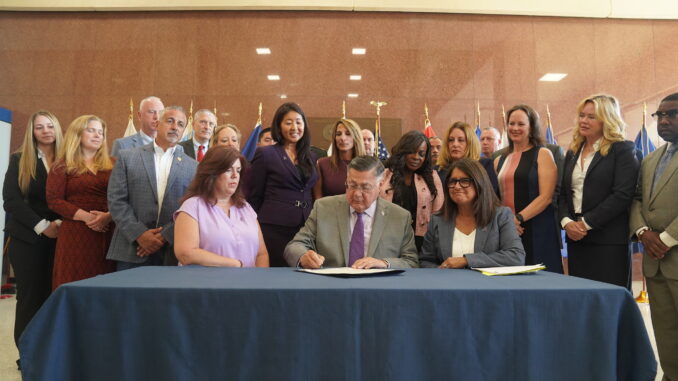
By Hank Russell
Suffolk County Executive Ed Romaine recently signed an executive order creating the Suffolk County Alliance Against Domestic Violence, a groundbreaking initiative to strengthen coordination among government agencies and nonprofit service providers in the fight against domestic violence.
“Suffolk County remains committed to protecting our most vulnerable residents and ensuring that every person feels safe in their own home,” Romaine said. “This Alliance represents an unprecedented level of cooperation between county government, law enforcement, and our community partners — all working together with shared data, shared resources, and one shared goal: ending domestic violence.”
Under the executive order, the Alliance will establish mechanisms for real-time data sharing between law enforcement and service providers to improve victim referrals and case coordination; implement countywide programs and services focused on prevention, intervention, and recovery; launch public awareness and education campaigns to promote early intervention and community engagement; and hold quarterly meetings to review and assess the work of the Alliance.
According to the Suffolk County Police Department, more than 27,000 domestic incidents were reported in 2024, with over 280,000 incidents reported in the past decade — underscoring the urgent need for coordinated action and stronger support systems for victims.
“Domestic violence is not a private issue — it is a community crisis,” said Romaine. “Together, through this alliance, we can ensure that every victim has a voice, every case receives attention, and every effort is made to break the cycle of violence.”
Laura Ahearn, the executive director of the Crime Victims Center of Suffolk and Nassau, noted that the number of domestic violence incidents in Suffolk has increased over the past five years.
“It’s not just a reflection of individual crises — it’s a systemic warning,” Ahearn said. “The pandemic intensified isolation and economic stress, trapping survivors with abusers. Rising housing costs and limited shelter capacity have made escape harder, while financial dependence and childcare barriers keep many locked in unsafe situations.”
Despite the growing awareness of this crisis and more survivors coming forward, “our systems are stretched thin,” AHearn said. “We need sustainable funding, coordinated trauma-informed response, and policy reform that centers survivor autonomy and dignity. This is a moment to move beyond reaction and toward transformation.”

